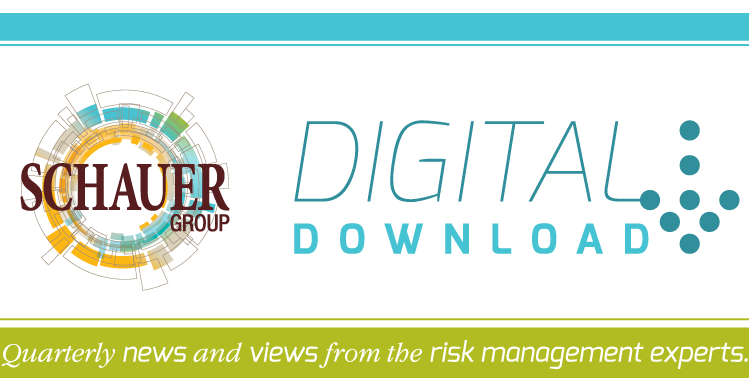Employers across the country are facing a pronounced issue right now: too many open positions and not enough workers. Why are individuals slow to return to work despite available positions and how can employers attract some of these workers?
Employers across the country are facing a pronounced issue right now: too many open positions and not enough workers.
On its face, it might seem like there are not enough workers available for jobs—hence all the openings. But, confoundingly, that’s not the case. The unemployment rate is still hovering just below 5%, translating to around 7.5 million unemployed Americans, according to the Bureau of Labor Statistics.
Additionally, several key COVID-19 initiatives ended at the end of summer—expanded unemployment benefits ceased, and children returned to in-person classes. As such, many economists expected workers to be spurred back into the workforce this fall. That’s decidedly not been the case; while some individuals are returning to work, others are quitting in record numbers.
This article explores the current labor market, offering potential reasons why individuals have been slow to return to work despite available positions and suggesting ways for employers to attract some of these workers.
Factors Impacting Labor Shortage
The current labor shortage is an interesting situation. On the one hand, there technically isn’t a shortage of labor, given the nearly 8 million currently unemployed workers. On the other hand, there are countless workplace openings that haven’t been filled. In that sense, there is certainly a labor shortage. This section hones in on potential contributing factors, many of which stem from the COVID-19 pandemic.
Fear of Contracting COVID-19
One obvious reason for the labor situation may be COVID-19-related fears. Some workers are simply afraid of contracting a serious case of COVID-19 at work. To some, remaining unemployed longer outweighs the risks of taking an in-person job. However, as more Americans get vaccinated, this may become less of a concern.
Comfortable Savings
During the pandemic, much of the country was in some sort of lockdown, with restrictions put on travel, gatherings and business operations. In effect, many activities people enjoyed were suspended for nearly a year. That meant all the money that someone might spend on eating out, going to the movies or attending concerts all went into personal savings. Plus, individuals received generous stimulus checks and had access to enhanced unemployment benefits during this time, which also contributed to savings.
Now, some workers are relying on those accrued savings to remain out of the workforce. Essentially, they are using their assets to hold out for a desirable job. Under normal circumstances, these people may have taken the first available position. But, with a savings safety net, they are able to wait longer.
Reprioritized Worker Desires
The COVID-19 pandemic caused workers to reevaluate their priorities, contributing to the labor shortage. Suddenly, workers began to rethink their priorities and the value of their labor. As the pandemic endured, a common thought was, “Is this job worth my mental and physical health?” Now, even as employees who were laid off are offered their previous positions, the answer among many has been a resounding, “No.”
Paired with accrued savings, workers are now able to be more discerning with the jobs they accept. As such, a significant number have chosen to quit their current jobs while they search for more fulfilling options.
According to several surveys, employees are looking for the following advantages when job hunting:
- Scheduling flexibility and/or telework options
- Access to employee benefits
- Greater compensation
- Job fulfillment
Continued Caregiving Duties
Finally, the COVID-19 pandemic has also affected the labor market through child care issues. While many schools have returned to in-person learning, some have not. On top of that, some day care facility rates have shot up due to staffing shortages and an influx of parents seeking child care.
For some parents, the costs of day care or the risks of in-person learning are too great. It may be more cost-effective to remain an at-home caregiver a bit longer instead of returning to the workforce right now.
Potential Employer Solutions
Cumulatively, the factors contributing to the current labor shortage amount to more leverage for workers. Some workers realize that employers are desperately trying to fill positions. In turn, those workers are leveraging their labor to obtain positions they value more—holding out for the right offer.
So, employers need to do what they can to make their open positions and workplaces ones that employees desire. Doing any less may severely impact both employee attraction and retention. That means implementing some of the aspects employees say they want, including the following:
Scheduling and Work Location Flexibility
During the height of the COVID-19 pandemic, many workplaces that were able to stay operational went remote. This meant sending most employees to work from home. Now that workplaces are reopening, many of those employees do not wish to return to in-person work.
Instead, formerly remote employees want to retain their status. This leaves employers with a couple of options: allow telework for some positions or introduce a hybrid schedule (i.e., require some in-person days, allowing telework the rest of the week).
In addition to helping cater to employee desires, telework also expands candidate pools, adding another incentive for employers. When a position can be done from anywhere, an employer doesn’t need to restrict hiring to a specific geographical region. It also enables employers to retain workers who may be interested in moving outside of a workplace’s region.
Benefits Access
Employee benefits are coveted assets in any workplace. Even narrow packages that just include health care can be supremely valuable among employees. They are valued even more by workers without access to them, such as part-time or service sector employees.
In fact, access to employee benefits, or a lack thereof, is one of the reasons some workers have held off on returning to former positions. After living through a pandemic, it’s not hard to imagine why individuals aren’t eager to seek in-person jobs that don’t offer health care.
Employers can consider how employee benefits packages might appeal to the kinds of workers they need. This could mean potentially expanding benefits options to some employees, such as part-time workers. Or, if an employer doesn’t offer any benefits, it might be worthwhile to consider adding some. Doing so could make a difference when trying to fill open positions or retain top talent.
Greater Compensation
Compensation is often brought up when asking employees what motivates them for obvious reasons. Simply put, individuals will likely respond to pay increases. If an employer has the budget for it, they can consider upping pay rates to attract workers or retain top performers.
Alternatively, employers can think about other means of compensation—basically, perks or value-adds that increase the worth of a position. Examples of such perks include:
- Generous time off
- Bonuses for meeting productivity goals
- Periodic catered lunches
- Company-sponsored team outings
- Free beverages or snacks in the workplace
Ultimately, employers should look for opportunities to demonstrate that they value their workers. Increasing compensation through the above means or otherwise can go a long way to showing that appreciation.
Job Fulfillment
Another attraction and retention strategy is improving worker perceptions about job fulfillment. Essentially, employers need to help employees answer the question, “Why is this job important?”
The answer to that question will depend on the workplace and position, but there are some general ways employers can help in this regard. Namely, employers can directly address the matter in job descriptions by explaining how the position helps customers or a larger goal.
Employers can also consider launching a branding campaign to help tell an important story. This could mean updating brand messaging, promoting certain initiatives or taking action on social issues. Summarily, such efforts help illustrate the values of a workplace. And when presented with a number of similar employers, workers are likely to decide where they want to work based on which company shares their values.
Employer Takeaways
The current labor shortage is due to several overlapping factors, many stemming from the COVID-19 pandemic. However, it’s not a traditional labor shortage in that there are still many unemployed individuals. The real crux seems to be that workers are leveraging the moment to obtain better jobs.
It’s unclear how long workers will remain selective with their labor. Realistically, savings only last so long and, with ample vaccine availability, the pandemic may be under control soon. Workers may be compelled back into the workforce sooner rather than later.
Yet, this may not be the case—the labor shortage might last months longer than anticipated. Therefore, it’s in employers’ best interest to listen to the desires of unemployed workers, such as flexibility and benefits. Understanding these drivers will be critical to attraction and retention efforts.
At the end of they day, if an employer turns a deaf ear on what employees are looking for, they may be limiting the applicants they receive—both in terms of quality and quantity. In turn, this can severely impact an organization’s ability to grow and succeed.
Reach out to Schauer Group for more attraction and retention guidance.






